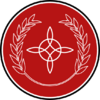Third-gender identity in Northern Yazland
| This article is part of a series on |
| Gintem culture |
|---|
 |
| Countries |
| Languages |
| Religion |
| History |
| Culture |
| Related topics |
|
|
Third-gender identity in Northern Yazland encompasses a wide range of modern and historical identities across different cultures in the Northern Yazland cultural sphere, and within areas influenced by the Yasgan peoples. While the identity as well as the cultural treatment of those who identify with it have shifted both over time and across different countries and cultures, there are clear similarities, and the various forms and expressions of it appear to share a common cultural ancestor.
History
Inscriptions describing people who were societally considered to not be either male or female date back to some of the earliest writing found in the area. These people were well-integrated into society, although faced some barriers in regards to marriage and building family; they are largely referenced in relation to religious figures, scribes, court members, and gods, and do not appear to be referenced in most listings of family trees, even when evidence shows that a person with this identity existed.
Description
Third-gender individuals in the modern day and throughout recent history across Northern Yazland have had broadly similar social statuses and cultural relations to the societies they inhabit.
Assignment
Individuals may come to identify with, or be assigned, a third-gender label by a variety of factors; intersex babies may be referred to by the third gender, although most people identifying with a third-gender identity begin doing so around the onset of puberty, with some doing so later in life. Most individuals who identify with third-gender identities are assigned male at birth, although this varies and is not the case for every person. It may encompass identities like homosexual men, transgender women, gender-non-conforming people, non-binary people, effeminate men, and masculine women.
Societal position
Those identifying with a third gender are usually sterilised or otherwise forbidden from having children; people assigned male at birth might be eunuchised or castrated, while people assigned female at birth are generally not allowed to bear children, with some cultures enforcing abortive procedures that frequently harm the person carrying the child, historically involving force directed towards the womb or toxic medicines.
Individuals identifying with a third gender usually work in courts or as scribes or other "higher" forms of work, where they are traditionally meant to work; many, however, might join the workforce like men or help rearing children or other labor considered feminine.
Stigma
A certain amount of stigma exists against third-gender individuals; they are usually not allowed to marry and marriage with third-gender individuals is either forbidden or heavily discouraged. In addition, violence and sexual assault against third-gender individuals exists at a comparable rate as that towards women, and they might be barred from or discriminated against in more traditionally "masculine" roles or women-only spaces, regardless of their assigned gender at birth.
With the introduction of Kunwidya, a new wave of stigma towards third-gender individuals emerged; the comparatively conservative views on gender and sex promulgated by the religion have led to many previously-accepting societies becoming more aggressive towards third-gender individuals, with some countries attempting to purge them outright.
Terms across different languages
Many languages across Northern Yazland use a similar word, derived from Proto-Yasgan *wrā́ǵn̩-əs, with few exceptions.
| Language | Term | (IPA) |
|---|---|---|
| Tschintierst | wråschåns | /vrɑɕɑnz/ |
| Classical Doccábh | frágn | /ˈfra:ɣn̩/ |
| Dhimze | rvadin | /ˈrvadin/ |
| Gharzi | ërgada | /ɤɾˈgɐðɐ/ |
| Teremish | bralnos | /ˈbrɑlnɵs/ |
| Fuggic | mrágą́ | /mraigŋ̩/ |
Status across different countries and areas
Gintem Confederation
uhh gintem you can marry but its bad to this was basically also the same in the doccabh empire